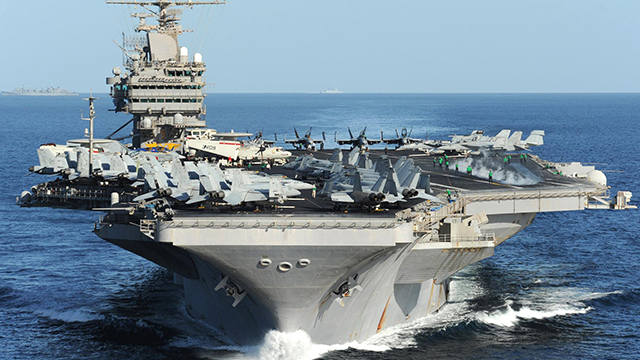This article was originally published on Jayu Press and translated by OKN Correspondent.
The ROK-U.S. alliance, which was on the verge of collapse during the five-year tenure of the Moon Jae-in administration, is being revived ahead of the inauguration of the Yoon Seok-youl administration.
The first signal is the ROK-U.S. summit, which is being planned for late May. It is expected that each country will soon begin to formally coordinate plans for U.S. President Joe Biden to visit South Korea and Japan at the end of May. President-elect Yoon Seok-youl’s inauguration ceremony is to be held on May 10.
Therefore, if President Biden’s visit to South Korea is confirmed, he will be the first foreign leader to visit since the inauguration of the new administration. If this summit is to happen and is expected to happen some 20 days after the inauguration, it will be the earliest summit to take place in the history of South Korea. In previous administrations, the ROK-U.S. summit during the Moon Jae-in administration was held 51 days after its inauguration, 71 days for the Park Geun-hye administration, 54 days for the Lee Myung-bak administration, and 79 days for the Roh Moo-hyun administration.
The second signal is the USS Abraham Lincoln (CVN-72), a nuclear-powered aircraft carrier, entering the East Sea and the upcoming ROK-U.S. joint military exercises. The U.S. recently sent the USS Abraham Lincoln (CVN-72), a nuclear-powered aircraft carrier, into the East Sea as a warning against North Korea’s escalating provocations such as nuclear weapons testing ahead of Kim Il-Sung’s birthday (April 15) and the founding of the North Korean People’s Revolutionary Army (June 25).
This is the first time in four years and five months that a U.S. aircraft carrier has entered the East Sea since November 2017. This is the first time an aircraft carrier has entered the East Sea since the USS Ronald Reagan (CVN-76), USS Theodore Roosevelt (CVN-71), and the USS Nimitz (CVN-68) conducted joint drills with the South Korean Navy in November 2017, when North Korea conducted nuclear tests and ICBM tests.
The USS Lincoln entering the waters of the East Sea is drawing keen attention as it coincides with the start of the crisis management staff training (CMST), a preliminary training for the ROK-U.S. joint military drills in the first half of the year. South Korea and the U.S. will be holding the CMST from April 12 to 15. The CMST is led by South Korea’s Joint Chiefs of Staff to check how to properly manage unexpected events before war breaks out and normalize the state before the crisis.
After the preliminary training, South Korea and the U.S. will hold a Combined Command Post Training (CCPT) from April 18 to 28. The possibility of a joint drill between the South Korean Navy and the U.S. aircraft carrier during this period was also mentioned, but it has been reported that it’s been confirmed that it will not happen. However, it has been reported that U.S. and South Korean high-level military officials have considered sending a strong warning to North Korea on board the aircraft carrier entering the East Sea.
Previously, the USS Lincoln, which was in the Philippines, launched an F-35C to the West Sea as a warning to North Korea on March 15. The length of the aircraft carrier is 332.85m, the width of the flight deck and the hull is 78.4m and 40.84m respectively, 62.97m in height and the area of the flight deck is about 16,529 sq. m. The aircraft carrier is equipped with about 80 aircraft, including the F-35C and the F/A-18 Super Hornet, and has arms such as nuclear-powered submarines, Aegis destroyers, and missile cruisers.
The third signal is the upcoming visit on the 18th from Sung Kim, the U.S. State Department’s Special Representative for North Korea. Sung Kim’s party will visit South Korea and meet with officials from the current and incoming administrations for four days.
The Deputy U.S. Special Representative for North Korea Jung Pak is also reportedly visiting South Korea during the same period. Key U.S. officials are visiting South Korea a week after President-elect Yoon Seok-youl sent an envoy to the United States.
With the possibility of North Korea’s provocations escalating ahead of the inauguration of the Yoon administration, ROK-U.S. cooperative talks are taking place through a series of cross-visits. During his visit, Sung Kim will hold talks with his South Korean counterpart, Noh Kyu-duk, Special Representative for Korean Peninsula Peace and Security Affairs, and is also reportedly discussing scheduling a visit to the Unification Ministry. He’s also expected to meet with officials from the incoming administration, including the presidential transition team, to coordinate the direction of the new administration’s response to North Korea.
To read the original article in Korean, please click here.


